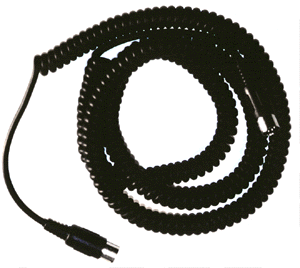Midi Tutorial Part 1: An Introduction to Midi

With the development of computers as the main platform for so much electronic music these days, it is not suprising that a lot of people do not really know what Midi is and how to use it. This tutorial is a brief outline describing what Midi is and how one might setup a few classic Midi setups.
Def Midi: Midi first debuted at NAMM in 1983 when 2 synths, a Roland jx-p3 and a Sequential Prophet 600 were hooked up to each other and could be played together. The original idea of midi came from Ikutaro Kakahsi in 1981, then the head of Roland. Midi was designed initially as a system of communication between 2 different synthesizers, particularly 2 synthesizers made by a different company. At the time that midi was first released nearly all of the major synthesizer companies had some sort of communication system for their own synths. Roland had a DCB buss system, Sequential had a digital system, and Oberheim had a bulk dump system called Universal Synthesizer Interface (USI). Most of the ideas regarding how to transfer information for midi borrowed on the ideas of USI.
Midi info tips by M.A.S. Thanks to .:Keyboard Magazine:. for additional info.
1. Midi sends performance data down its lines, not sound!!! Midi sends information called “note-on message” it is the synth on the receiving end of the midi data that determines what sounds to create. Hence you cannot transfer music or sound from harddrive to your computer, or hardware-to-hardware through a midi cable.
2. Out --> in, in --> out. You don’t connect similar jacks together as you normally do with audio cables. The labels for midi cables refer to the direction and flow of the data.
3. Midi cables are one directional. Unlike firewire or usb where you only need one cable to transfer data between both instruments, midi can only travel one way on a cable. Hence you need two cables to transfer data between two instruments
4. Midi is transferred in serial not parallel format. Midi data flows down a cable one bit at a time, which creates potential problems for midi transfer. The data transmission speed of a midi cable is 31,250 bits/sec, so a single cable can only carry 3,1250 bytes/sec. A midi note on message = 3 bytes. Doing the math (which I didn’t do, Keyboard Magazine did thankfully) then, to send a single note on message down the line results in a 1ms lag. This is inevitable. Play 20 notes simultaneously results in a 20ms lag, and so on for more notes.
5. Never connect more then 8 devices using "thru" on your synths. The Midi information degrades as it goes through each thru. Your last synth in the line will tend to have very high latency and also have note stuck ons.
6. 16 channels of data can be shared on 1 midi cable. Each sound on your synth takes up 1 midi channel, multi-timbral synths can play multiple patches of a sound at once, so each sound or timbral requires its own midi channel.
7. There are two types of midi sync: Clock message sync= start and stop messages and song position messages, and Midi Time Code (MTC)= a process of sending SMPTE sync code down a midi cables. This us useful for syncing tape decks and the like. It contains information as to how much time has passed since “start” has been initiated.
8. Midi note data always is based on the number 128. This applies to knob and controller data as well. 128 notes are also allowed to be played for each midi channel
9. A midi note-on message has 3 parts. 1. Channel number 2. Note number (on/off data) 3. Velocity data. A midi velocity of 0 will turn off a note as does the note off message
10. Continuous controllers are not continuous!!!! When u send midi data it is transferred in steps and whole numbers 1,2,10,31,67 (possible 0-127) you cannot transfer data like 34.23467.11.
Midi files are easy ways to transfer data between systems. Midi files are universal and are not bound by tempo. They do not contain any sounds!!! When you play a midi file on your computer your computer is playing its internal sound fonts as sounds.
To view all of the crazy technical information and mathematical data regarding midi see the official site at http://www.midi.org
Be sure to stay tuned for more info on how to connect various different types of instruments and what you need to be aware of while performing live.
Tags: midi tutorial introduction
1 comment:
Curly midi cables? Cool!
And this is some seriously fine blogger hacking, by the way - way nicer looking than my site - musicthing.blogspot.com
Post a Comment